POLYCHROMATIC BOTANY // Color variation in inflorescences of Ixora coccinea
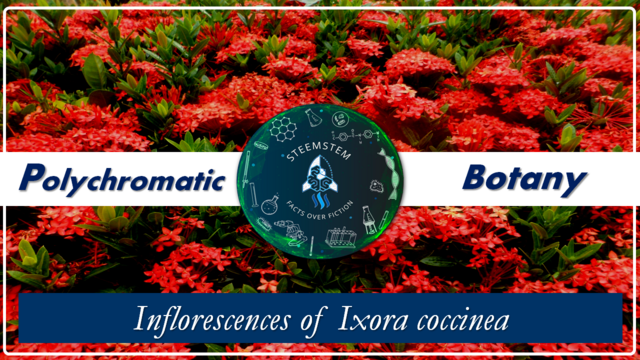
Dear friends, followers and members! of the Steem platform.
Giving continuity to the order of publication by topic, this time we will deal with aspects of POLYCHROMATIC BOTANICS, particularly about foliar color as a reproductive strategy using the color variation exhibited by the inflorescences of Ixora coccinea.
Introduction
In the previous post, about polychromatic botany, the foliar coloring related to protection strategy was discussed, detailing the different types of foliar or photosynthetic pigments involved in the multiple colors that bracts exhibit as vegetative macroscopic structures.
Now, in addition to the vegetative macroscopic structures, nature manifests different types of coloration polymorphism in reproductive cut macroscopic structures (flowers and inflorescences), mainly as a strategy to attract pollinating insects, and in other cases, these color changes may be related with the loss of pigments, or edaphoclimatic factors that influence the final color that reflect the floral units [4].
Consequently, the goal of the post is to socialize the color variation exhibited by the inflorescences of Ixora coccinea, as a reproductive and protection strategy.
Polychromatic botany
As explained in the previous manuscript of this scientific topic, the word polychromatic, is nothing more than a conceptual representation widely used in botany, to distinguish mainly those plant macroscopic structures that exhibit multiple colors.
The inflorescences as plant structures of macroscopic profile, are distinguished as reproductive organs that show a varied range of colors, product of the absorption and reflection of the light that affects their floral plates, however, it is important to highlight that the observed color by humans, it is located between the photons of light from 380 and 730 nm; while, mainly insect pollinating agents, capture shorter wavelengths [4] and [5].
Floral coloring polymorphism
Invariably flowering plants or Magnoliophyta, are characterized by exhibiting red, pink, yellow, orange, violet floral plates among others, this mainly due to the presence of anthocyanin pigments, however, individuals usually find themselves within the same taxon With different coloring, this aspect of floral coloring polymorphism is related to the degradation or loss of pigments, in addition to the interaction and chemical variation in reproductive structures, such as; changes in pH, temperature and uneven percentages of heavy metals [5].
Intraspecific Coloring Polymorphism
It is known by intraspecific polymorphism, the color variation shown by the reproductive organizational structures within the same plant taxonomic group, that is, one or more individuals of the same plant species, can exhibit specific color variation in their floral plates , being able to classify these botanical biotypes as subspecies or variety [7].
Inflorescences as polychromatic structures
It is called inflorescence, the arrangement or arrangement of flowers in a branching system, these floral organizational adjustments are physiologically different from photosynthetic sheets, this due to their participation in the process of sexual reproduction, on the other hand, they have a wide range polychromatic as a strategic derivation, to attract specific pollinating agents [5].
Even when the inflorescence is morphologically different from the leaf blades (leaves), in terms of; shape, size, consistency and color, similarly they are inserted to the nodes of the stem by means of structures called peduncles, forming a specific filotaxic arrangement according to the taxonomic group.
Field polychromatic study
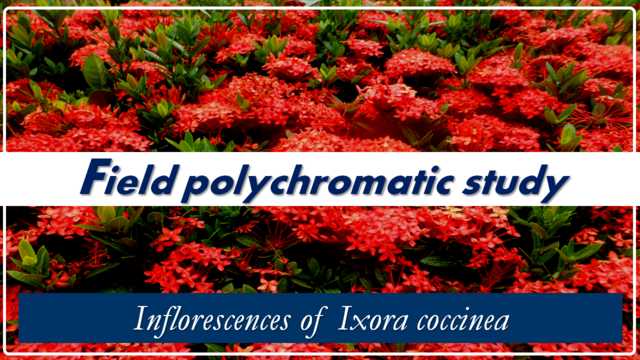
Fig. 2 Polychromatic field study // Color variation in inflorescences of Ixora coccinea. Autor: @lupafilotaxia.
Species and study area
In order to socialize some polychromatic strategies that vegetables show, I will socialize with you all a study on the variation of the floral color that the inflorescences of the Ixora coccinea (RUBIACEAE) species known vulgarly as IXORA exhibit, the study area corresponds to the spaces Ornamental of the Food Engineering program of UNESUR, a university institution located in Santa Bárbara of Zulia - Venezuela.
Methodological approach
In order to be able to relate the evolutionary advantage expressed by the inflorescences, polychromatic observations were made in floral structures of IXORA Ixora coccinea, the descriptive analyzes consisted of estimating the predominance and intensity of floral coloration and the biomass of the polychromatic sheets with respect to Photosynthetically active.
Polychromatic results
Predominance of floral coloring
The floral red color was much more abundant in the sampled individuals, followed by pink and yellow, it is relevant to highlight that the predominance of red coloration, authors like [2], associate it with the accumulation of anthocyanin pigments.
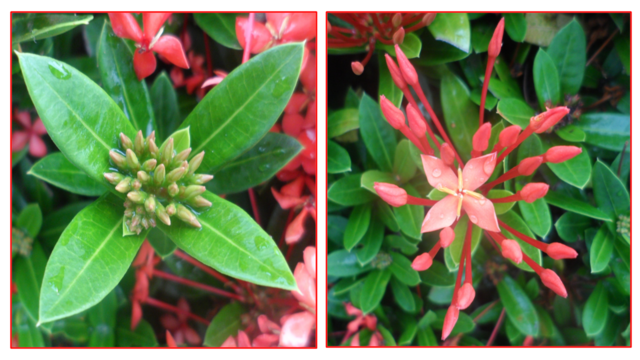
Fig. 3 On the left, the floral apex of IXORA Ixora coccinea (RUBIACEAE) is detailed, to the right of the elements of the red-colored floral units. Autor: @lupafilotaxia.
Intensity of floral coloring
The red color in the inflorescences turned out to be the most intense and bright, biological behavior that is probably due to a Copigmentation strategy, which reveals that a more acute anomalous coloration of the anthocyanins was likely in these IXORA Ixora coccinea individuals, mediated by interaction of other organic substances, derivative action, as a protection mechanism against degradation at the level of pigments caused by unfavorable values of light hours, high temperature or pH variation.
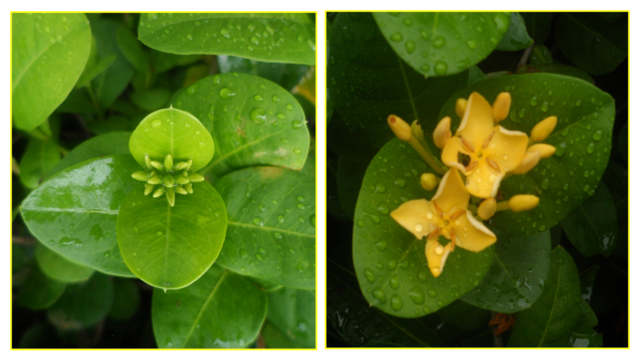
Fig. 4 On the left, the floral apex of IXORA Ixora coccinea (RUBIACEAE) is detailed, to the right of the elements of the yellow-colored floral units. Autor: @lupafilotaxia.
Biomass of polychromatic sheets
The highest photosynthetically active foliar biomass found was found in IXORA individuals Ixora coccinea, who exhibited pink-colored inflorescences, a biological response related to a greater presence of water-soluble betalaine pigments that indirectly collaborate with photosynthetic activity.
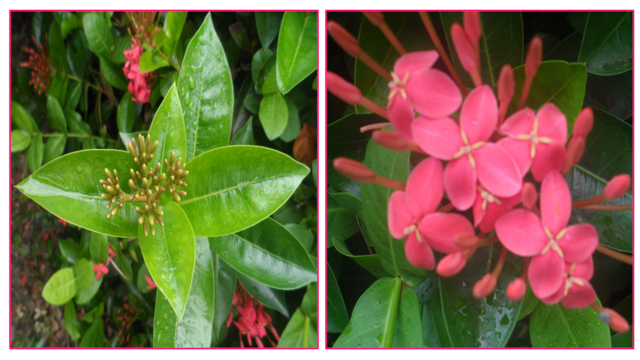
Fig. 5 On the left, the floral apex of IXORA Ixora coccinea (RUBIACEAE) is detailed, to the right of the elements of the pink-colored floral units. Autor: @lupafilotaxia.
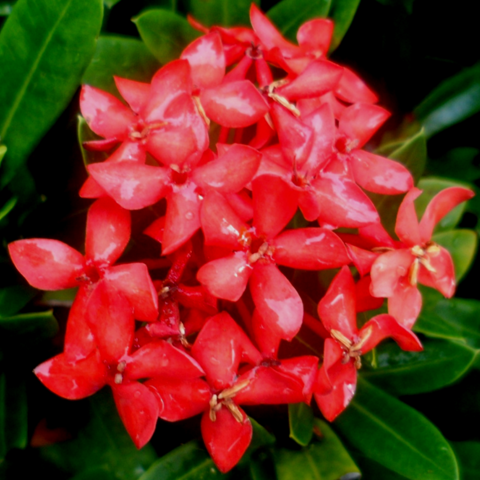
Fig. 6 Red inflorescences of IXORA Ixora coccinea (RUBIACEAE). Autor: @lupafilotaxia.
In relation to the inflorescences of IXORA Ixora coccinea, which exhibited pink and yellow coloration, it is estimated that it is a dimorphic strategy that occurs in the same individual (two colors in the same individual), in order to attract diversity of pollinating agents, while the chromophore biomolecules associated with this coloration are the carotenoids.
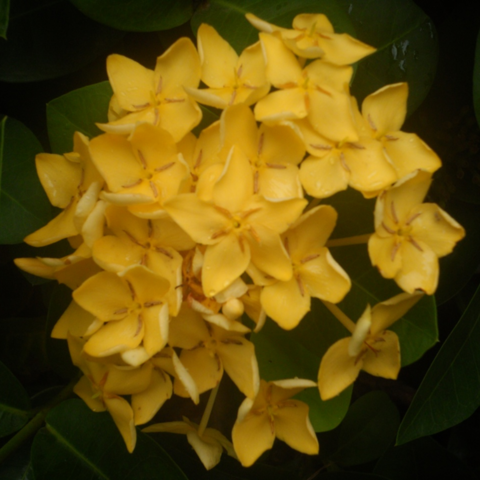
Fig. 7 Yellow Inflorescences of IXORA Ixora coccinea (RUBIACEAE). Autor: @lupafilotaxia.
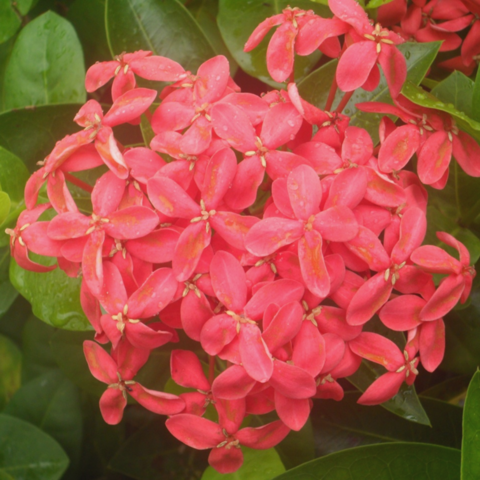
Fig. 8 Pink Inflorescences of IXORA Ixora coccinea (RUBIACEAE). Autor: @lupafilotaxia.
SCIENTIFIC CONTRIBUTIONS OF THIS PUBLICATION
- The post allows to identify, the polymorphism of floral coloration that show the inflorescences of IXORA Ixora coccinea, when describing the polychromatic manifestation expressed by the floral units by intense and bright red coloration, as a co-biological survival strategy to avoid the degradation of the Pigments, on the other hand, the observations made to the rest of the specimens of I. coccinea admit that the expression of two colors in the same individual is a dimorphic ability to attract a greater number of species of pollinating insects. Therefore, the aspects evaluated in the post, offer descriptive information for future research where variables can be assessed such as; influence of pH and high temperatures on the variation of floral coloration.
BIBLIOGRAPHICAL REFERENCES CONSULTED AND CITED:
[1] Anant D., Dhanraj J., Shashikant D., Ramling P., and Ajay G. Flower extract of Ixora coccinea as a natural indicator in acid base titration. Journal of Pharmacy Research. 2010;3:10:2512-2513.
[2] Escribano M., and Santos C. Anthocyanin Copigmentation - Evaluation, Mechanisms and Implications for the Colour of Red Wines. Curr. Org. Chem. 2012;16:9:715-723.
[3] Gauche C., Malagoli, D., and Luiz M. Effect of pH on the Copigmentation of anthocyanin from Cabernet Sauvigon grape extracts with organic acids. Sci. Agric. (Pricaba, Braz). 2010;67:1:41-46.
[4] Kelber A., Vorobyev M., and Osorio D. Animal colour vision—behavioural tests and physiological concepts. Biological Reviews. 2003;78:81-118.
[5] Kevan P., Giurfa M., and Chittka L. Why are there so many and so few white flowers?. Trends in Plant Science. 1996;1:280-284.
[6] Nayak F., Rideout A., Raggasa C., Kokate K., and Gokhale D. Effect of Ixora coccinea flowers on dead space wound healing in rats. Fitoterapia. 1999;70:233-236.
[7] Resmi A., Surabhi S., and Aradhya M. Study on Pigment Variation of Selected Varieties of Ixora coccinea L. Trends in Biosciences. 2018;11:7:1194-1196.
ATTENTION / Readers and Followers
If you want to read more scientific articles of excellent academic quality, do not waste time, and visit the label #steemSTEM, is a large community that values and promotes scientific content, mainly in the areas of Science, Technology, Engineering and Mathematics.

INVITATION
Dear reader, if you wish to obtain more information about it, join our server in Discord
OBSERVATIONS
✔ The POST 📧📨 was uploaded using the official app of https://www.steemstem.io
OBSERVATIONS
✔ The POST 📧📨 was uploaded using the official app of https://www.steemstem.io
You can visit the official app of our community
https://www.steemstem.io
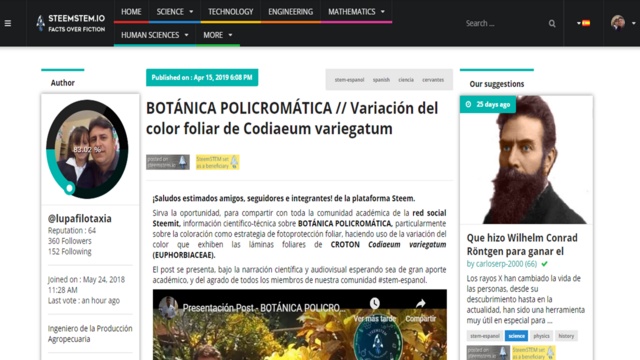

Saludos @lupafilotaxia
Lo anterior planteado en el mundo del comercio, nos indica que al tener mayor variedad de oferta; que permita satisfacer mayor cantidad de gustos, llevara a incrementar la cantidad de ventas.
La naturaleza es sabia.
Saludos amigo @tramelibre, gracias por leer el post, muy acertada tu analogía, aspecto que reitera las estrategias biológicas empleadas por la madre natura.
This post has been voted on by the SteemSTEM curation team and voting trail. It is elligible for support from @curie and @utopian-io.
If you appreciate the work we are doing, then consider supporting our witness stem.witness. Additional witness support to the curie witness and utopian-io witness would be appreciated as well.
For additional information please join us on the SteemSTEM discord and to get to know the rest of the community!
Thanks for having added @steemstem as a beneficiary to your post. This granted you a stronger support from SteemSTEM.
Thanks for having used the steemstem.io app. You got a stronger support!